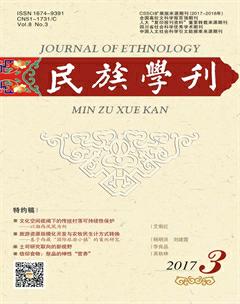The Establishment of Administrative Institutions in Ethnic Minority Areas of BaShu in the Tang Dynasty
Ma+Tingzhong
Abstract:
The Tang period is an important stage for the development of ethnic minorities in the BaShu area. During this period, the Tang court established administrative institutions, and strengthened its rule there. Among these ethnic minorities, there were not only indigenous ethnic minorities who had been living in Sichuan since the Wei and Jin periods, such as the Di, Qiang, Manliao and Mosuo, etc., but also some new ethnic minorities, such as the Tubo people who were distributed in south, southwest and southeast Sichuan. There were two types of administrative institutions established by the Tang court in BaShu ethnic areas. One type was zhengzhou (正州 or directly ruled prefectures) and zhengxian(正县or directly ruled counties) where the governmental affairs were managed by zhoucishi (州刺史 or prefectural governors) and xianling(县令or county magistrates) appointed by the imperial court. The other type was jimizhou(羁縻州or Jimi prefectures) and jimixian(羁縻县or Jimi counties) where those tribal leaders who had already paid allegiance to the royal court held the posts of prefectural governor and county magistrate. In addition, their post could be passed to their descendants. These Jimi prefectures and Jimi counties were managed by the dudufu(都督府or the Office of Area Command) set up in border prefectures by the royal court.
After the founding of the Tang dynasty by Emperor Gaozu, zongguanfu (总管府or regional military management office) were set up. In the 7th year of the Wude period (624 A.D.),the zongguanfu office was replaced by dudufu. During the period of Emperor Taizong of the Tang dynasty, most dudufu in BaShu areas were dissolved, and most ethnic minorities in the areas were successively put under the administration of the zhengzhou and zhengxian, and formally became legal residents of the state. However, in the northwest high plateau, the southwest mountainous areas of todays Sichuan, and the southern region of the Yangtze river within Sichuan basin, Jimi prefectures and Jimi counties were set up for the tribes who submitted to the imperial court.They were ruled respectively by the dudufu of Songzhou, Maozhou, Yazhou, Lizhou, Xizhou, Rongzhou, Luzhou and Qianzhou.
According to historical records, there were 348 Jimi prefectures which were under the administration of Jiannandao(劍南道 or an administrative level in the Tang dynasty) successively. Among them, 104 prefectures were under the administration of Songzhou (todays Songpan) dudufu, 39 were under Maozhou (todays Maoxian) dudufu, 57 were under Yazhou (todays Yaan) dudufu, 54 were under lizhou (todays Qingxi in Hanyuan) dudufu, 16 were under Xizhou dudufu, 64 were under Rongzhou dudufu, and 14 were under Luzhou dudufu ( Brief History of Sichuan,1986). Through these administrative institutions, the Tang court strengthened its rule in the ethnic minority areas of BaShu. The administrations that were set up there are as follows : Songzhou dudufu, Maozhou Dudufu, Yazhou Dudufu, Xizhou dudufu, Lizhou dudufu, Rongzhou dudufu, Luzhou dudufu, Qianzhou dudufu and Kuizhou dudufu. Under the rule of the Tang court, the social economy and cultural education of these ethnic minorities all developed. This laid the foundation for the development of the Song dynasty and the future.
In the ethnic areas of the western Sichuan, the Tang court set up Songzhou dudufu and Maozhou dudufu which were responsible for the management of Jimi prefectures and counties; In the ethic areas of Southwest Sichuan, the Tang court set up the Yazhou dudufu, Xizhou dudufu, Lizhou dudufu, Rongzhou dudufu, and Luzhou dudufu which were responsible for the management of Jimi prefectures and counties. In the ethnic areas of southeastern Sichuan, the Tang court set up the Qianzhou dudufu, and Kuizhou dudufu which were responsible for the management of Jimi prefectures and counties.
Through these administrative institutions, the Tang dynasty strengthened its rule in these areas. Not only did it further incorporate these areas into a unified multinational country, but also promoted the development of the social economy in these areas and improved the progress of these ethnic groups. Under the rule of the Tang dynasty, both the social economy and cultural education of these ethnic groups developed, which laid the foundation for the future developemnt of the Song dynasty.
Key Words:the Tang dynasty; BaShu ethnic areas; administrative management institution
References:
An Jiesheng.lishi minzu dili(Ethnic Historical Geography[Vol.1]).Jinan:shandong jiaoyu chubanshe,2007.
Li Jingxun.sichuan tongshi(General History of Sichuan[Vol.3]).Chengdu:sichuan renmin chubanshe,2010.
Li Zongfang.sichuan gudai minzushi(Ancient Ethnic History in Sichuan).Beijing:minzu chubanshe,2010.
Ou Yangxiu,Song Qi[the Song Dynasty]. xintangshu·dilizhi(New Book of the Tang· Geography).Beijing:zhonghua shuju,1975.
Sichuan jianshi(Brief History of Sichuan). Chengdu:sichuansheng shehui kexueyuan chubanshe,1986.

